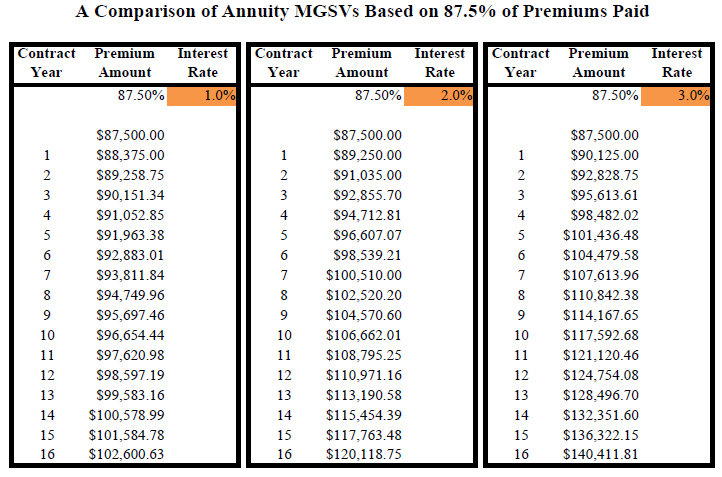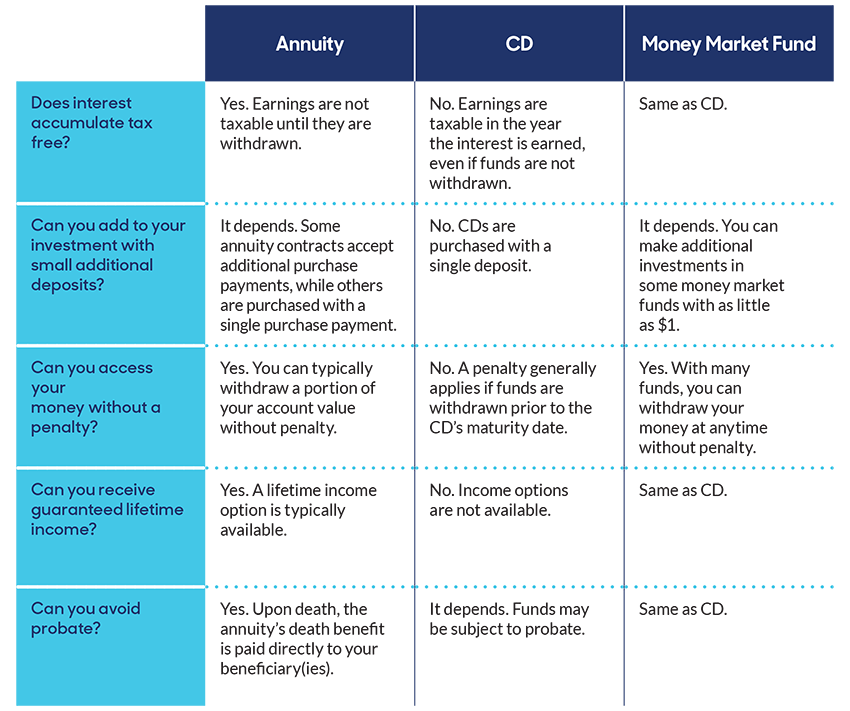All Categories
Featured
Table of Contents
Equally as with a taken care of annuity, the proprietor of a variable annuity pays an insurance coverage business a round figure or collection of payments in exchange for the pledge of a series of future repayments in return. As pointed out over, while a taken care of annuity grows at a guaranteed, constant rate, a variable annuity grows at a variable price that depends upon the efficiency of the underlying investments, called sub-accounts.

Throughout the accumulation stage, possessions purchased variable annuity sub-accounts expand on a tax-deferred basis and are taxed just when the agreement owner takes out those incomes from the account. After the buildup stage comes the revenue phase. Gradually, variable annuity assets need to in theory raise in value up until the contract proprietor decides he or she wish to start taking out cash from the account.
One of the most considerable concern that variable annuities usually existing is high expense. Variable annuities have numerous layers of charges and costs that can, in accumulation, develop a drag of as much as 3-4% of the contract's value yearly. Below are the most usual fees associated with variable annuities. This expenditure compensates the insurance company for the danger that it assumes under the terms of the contract.
Highlighting the Key Features of Long-Term Investments Key Insights on Your Financial Future Breaking Down the Basics of Investment Plans Benefits of Choosing the Right Financial Plan Why Choosing the Right Financial Strategy Is Worth Considering Fixed Interest Annuity Vs Variable Investment Annuity: Simplified Key Differences Between Different Financial Strategies Understanding the Risks of Variable Vs Fixed Annuity Who Should Consider Strategic Financial Planning? Tips for Choosing Choosing Between Fixed Annuity And Variable Annuity FAQs About Variable Annuity Vs Fixed Annuity Common Mistakes to Avoid When Choosing Fixed Annuity Vs Variable Annuity Financial Planning Simplified: Understanding Variable Annuity Vs Fixed Annuity A Beginner’s Guide to Retirement Income Fixed Vs Variable Annuity A Closer Look at How to Build a Retirement Plan
M&E cost costs are calculated as a percentage of the contract worth Annuity providers pass on recordkeeping and various other administrative expenses to the contract proprietor. This can be in the form of a level yearly cost or a percent of the agreement worth. Administrative charges might be consisted of as part of the M&E danger fee or might be evaluated individually.
These charges can range from 0.1% for easy funds to 1.5% or even more for proactively managed funds. Annuity agreements can be tailored in a number of methods to serve the specific requirements of the agreement proprietor. Some usual variable annuity riders consist of guaranteed minimum build-up advantage (GMAB), guaranteed minimum withdrawal benefit (GMWB), and guaranteed minimum earnings advantage (GMIB).

Variable annuity payments offer no such tax reduction. Variable annuities often tend to be very inefficient vehicles for passing riches to the following generation due to the fact that they do not enjoy a cost-basis adjustment when the initial agreement owner dies. When the proprietor of a taxable investment account passes away, the cost bases of the investments held in the account are adapted to mirror the marketplace prices of those investments at the time of the owner's fatality.
Analyzing Strategic Retirement Planning Key Insights on Your Financial Future Breaking Down the Basics of Investment Plans Features of Smart Investment Choices Why Choosing the Right Financial Strategy Is Worth Considering Variable Annuity Vs Fixed Annuity: Simplified Key Differences Between Different Financial Strategies Understanding the Rewards of Fixed Annuity Vs Variable Annuity Who Should Consider Strategic Financial Planning? Tips for Choosing the Best Investment Strategy FAQs About Planning Your Financial Future Common Mistakes to Avoid When Choosing a Financial Strategy Financial Planning Simplified: Understanding Retirement Income Fixed Vs Variable Annuity A Beginner’s Guide to Smart Investment Decisions A Closer Look at How to Build a Retirement Plan
Such is not the instance with variable annuities. Investments held within a variable annuity do not get a cost-basis modification when the initial proprietor of the annuity passes away.
One considerable problem related to variable annuities is the potential for conflicts of interest that might exist on the component of annuity salespeople. Unlike a monetary consultant, who has a fiduciary duty to make investment decisions that benefit the client, an insurance policy broker has no such fiduciary responsibility. Annuity sales are highly profitable for the insurance coverage experts who market them as a result of high upfront sales payments.

Lots of variable annuity agreements consist of language which positions a cap on the portion of gain that can be experienced by particular sub-accounts. These caps prevent the annuity proprietor from fully participating in a section of gains that could otherwise be appreciated in years in which markets generate substantial returns. From an outsider's point of view, it would seem that capitalists are trading a cap on investment returns for the previously mentioned assured flooring on investment returns.
As noted over, surrender fees can badly restrict an annuity proprietor's ability to relocate assets out of an annuity in the early years of the contract. Better, while most variable annuities permit contract proprietors to withdraw a defined amount during the buildup stage, withdrawals beyond this quantity typically lead to a company-imposed cost.
Withdrawals made from a fixed rate of interest price financial investment alternative could likewise experience a "market value change" or MVA. An MVA changes the worth of the withdrawal to show any kind of changes in rate of interest from the moment that the money was bought the fixed-rate option to the time that it was withdrawn.
:max_bytes(150000):strip_icc()/VariableAnnuitization-asp-v1-5dedf8fee4694d8dacd2ac7eb7b0757e.jpg)
On a regular basis, also the salespeople that offer them do not fully understand how they function, therefore salespeople occasionally take advantage of a buyer's feelings to market variable annuities instead than the qualities and viability of the products themselves. Our company believe that financiers must fully recognize what they possess and just how much they are paying to have it.
Decoding Pros And Cons Of Fixed Annuity And Variable Annuity A Closer Look at How Retirement Planning Works What Is the Best Retirement Option? Features of Fixed Index Annuity Vs Variable Annuity Why Choosing the Right Financial Strategy Can Impact Your Future Fixed Vs Variable Annuity: Simplified Key Differences Between Different Financial Strategies Understanding the Risks of Long-Term Investments Who Should Consider Fixed Annuity Or Variable Annuity? Tips for Choosing the Best Investment Strategy FAQs About Planning Your Financial Future Common Mistakes to Avoid When Choosing a Financial Strategy Financial Planning Simplified: Understanding Annuity Fixed Vs Variable A Beginner’s Guide to Smart Investment Decisions A Closer Look at Indexed Annuity Vs Fixed Annuity
Nevertheless, the very same can not be stated for variable annuity properties held in fixed-rate investments. These properties legally belong to the insurer and would certainly for that reason be at risk if the company were to stop working. Any type of warranties that the insurance company has agreed to offer, such as a guaranteed minimal income benefit, would certainly be in concern in the event of a service failure.
Potential purchasers of variable annuities ought to understand and consider the financial condition of the issuing insurance business before getting in into an annuity agreement. While the benefits and drawbacks of numerous sorts of annuities can be debated, the genuine issue surrounding annuities is that of viability. Place merely, the inquiry is: who should possess a variable annuity? This question can be tough to respond to, provided the myriad variants available in the variable annuity cosmos, but there are some fundamental standards that can assist financiers choose whether annuities should contribute in their economic strategies.
Besides, as the saying goes: "Purchaser beware!" This post is prepared by Pekin Hardy Strauss, Inc. Fixed income annuities. ("Pekin Hardy," dba Pekin Hardy Strauss Wealth Management) for informative purposes just and is not intended as an offer or solicitation for company. The info and data in this write-up does not comprise lawful, tax obligation, accountancy, investment, or other specialist guidance
Table of Contents
Latest Posts
Analyzing Strategic Retirement Planning Key Insights on Fixed Income Annuity Vs Variable Growth Annuity What Is Immediate Fixed Annuity Vs Variable Annuity? Features of Smart Investment Choices Why Ch
Understanding Financial Strategies Key Insights on Fixed Annuity Vs Variable Annuity Defining Fixed Annuity Vs Variable Annuity Features of Annuities Fixed Vs Variable Why Choosing the Right Financial
Analyzing Strategic Retirement Planning A Closer Look at How Retirement Planning Works Breaking Down the Basics of Investment Plans Benefits of Variable Annuity Vs Fixed Indexed Annuity Why Fixed Inco
More
Latest Posts